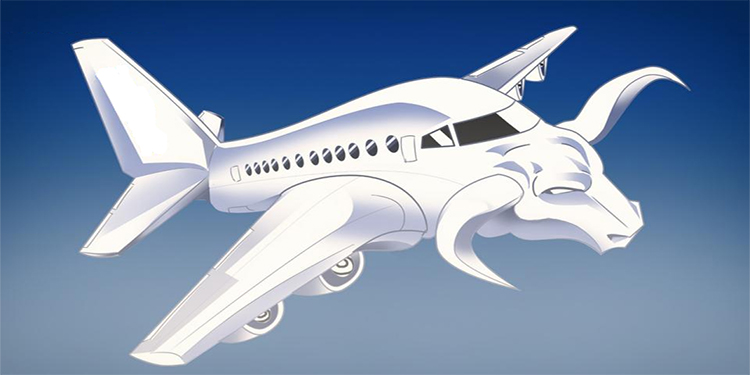Airline earnings season kicked off with a bang, not a whimper, Tuesday morning — but unfortunately, not the good kind of “bang.” Industry leader Delta Air Lines (DAL) reported exploding losses of $3.30-per-share loss (analysts were only expecting $3, even), despite sales falling just below consensus estimates at $3.1 billion.
Nor are things improving rapidly. Q4 revenue projections remain down as much as 70% from a year ago.
At last report, Delta was burning through $24 million in cash per day. That’s the bad news. The “good” news is that it’s burning through only $24 million per day — which works out to about $8.8 billion a year. At that rate, the company’s $21.6 billion in liquidity should give Delta enough cash to survive any recession lasting less than two-and-a-half years. Thus, while Delta fears that a return to “normal” revenues is probably “two years or more” away, the company can still probably make it in under the wire.
Perhaps this is why, out of the entire airline industry, Susquehanna analyst Christopher N. Stathoulopoulos named Delta one of just two names that he still thinks are worthy of buying (i.e. rated “positive”). The analyst’s second recommendation was Southwest Airlines (LUV) — and we’ll find out if it deserves that rating when Southwest reports its own earnings on Oct. 22 next week.
That same day, incidentally, we’ll also see an earnings report from Alaska Airlines (ALK) as well. How will it perform? Here’s a hint: Stathoulopoulos upgraded Alaska Air to become his third, and newest airline stock pick rated “positive.”
Simultaneously, he downgraded American Airlines (AAL) — which will also report Oct. 22 — to “neutral.”
Which brings us to the point of today’s column: What to expect from all of these airlines going forward.
Suffice it to say that things are not going great in air travel-land. “The risk of a second wave of COVID-19, the 2020/21 flu season, no extension of [the government’s Payroll Support Program supplementing airline employee salaries], the US presidential election, and related economic and civil unrest risk” are just a few of the problems Stathoulopoulos sees weighing on the sector, which have him thinking that risk is “skewed to the downside for the group.”
As Stathoulopoulos sees it, air travel demand is going to remain significantly depressed for the next several quarters, beginning a “gradual” (his emphasis) recovery only in the second half of next year. Even then, recovery will come first to short-haul airlines flying mostly point-to-point routes, operating mainly within the continental United States, boasting strong balance sheets, and flying relatively newer (i.e. low cost) planes in fleets where a single model of airplane dominates the fleet.
The more of those boxes an airline can check, the better it should be for the airline’s stock price, in Stathoulopoulos’s opinion. And according to him, Delta, Southwest, and Alaska Air are the three airline stocks that best fit that bill at present.
Farther out, Stathoulopoulos — like Delta — sees a more or less full recovery of the airline industry to pre-pandemic levels no sooner than 2023. By that time, air traffic should be back up to 90% to 95% of 2019 levels at the legacy airlines. Discounters like Southwest, meanwhile, could actually see traffic above 2019 levels by 2023 — and higher stock prices as well.
Using TipRanks’ Stock Comparison tool, we were able to evaluate these airline stocks alongside each other to get a sense of what the analyst community has to say.
To find good ideas for stocks trading at attractive valuations, visit TipRanks’ Best Stocks to Buy, a newly launched tool that unites all of TipRanks’ equity insights.
Disclaimer: The opinions expressed in this article are solely those of the featured analyst. The content is intended to be used for informational purposes only. It is very important to do your own analysis before making any investment.


